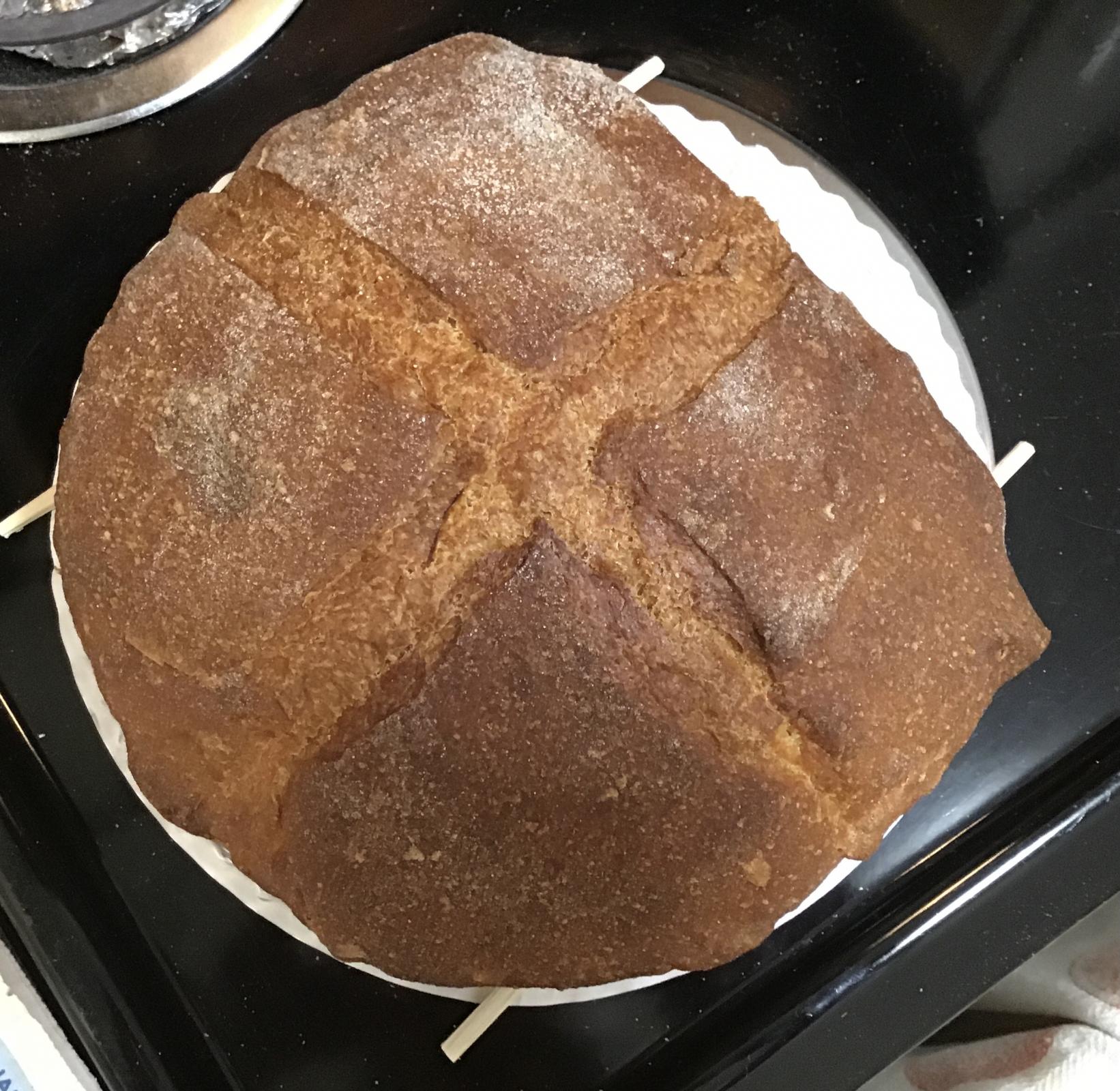First loaf-bread bake with Patel's house brand 100% WW stone ground durum. For a picture of the bag, see here: https://www.thefreshloaf.com/comment/469299#comment-469299
It was $7.99 for a 20-pound bag, $.40/pound. Ingredient list is just "durum whole wheat." No enrichments.
I've done tortillas, pizza crust (didn't let it autolyse/soak enough), and noodles, but this was the first loaf bread with this flour.
I learned from using the Sher Fiber Wala (from Brar Mills) 100% whole grain roller-milled flour, that WW durum takes a while to absorb the water -- and now even more so with the grittier stone ground flour.
Patel brand stone ground WW durum is not as gritty as semolina. Semolina has bigger particle sizes than this: and semolina is only about .8% ash, whereas whole grain durum is about 1.6% ash.
So I planned a long autolyse/soak, with salt, but no yeast/levain. It ended up being 4 hours and 50 minutes before I added instant dry yeast. This was at room temp, about 72 F.
I started out with 520 grams of the stone-ground WW durum, 2% salt, and 70% water.
After 2 hours I slowly added more water, 2% at a time, kneaded it in, until I got to 88% hydration.
I could still feel some mild grittiness, so more autolyse could have worked.
Then I added the 1/4 tsp instant dry yeast, folded it in, and added 1% more water for a total of 89%.
Bulk ferment (first rise) was about 3.5 hours. I did a few stretch and folds.
At some point during bulk ferment, the grittiness was gone.
I folded it and put it in a lined and dusted 8" inner-diameter banneton for final proof.
Final proof was about 1 hour, sitting a few inches above the stove-top while oven preheated. Noticeable dough expansion.
Preheated oven and Lodge 3.2 qt combo cooker to 465 F.
Oiled deep pot part of combo cooker and sprinkled in some semolina.
Put a round piece of parchment paper over the dough in the banneton. Inverted the Lodge pot over the banneton and filpped them both over. Then removed banneton.
Scored dough with a bare razor blade.
Baked covered at 450 F for 10 minutes.
Baked covered at 425 F for 10 minutes.
Baked covered at 400 F for 10 minutes.
Uncovered. Only mild oven spring and expansion of the score. Crust was already kind of dark.
Baked uncovered at 400 F for 10 minutes.
Internal temp 209.5 F. Thump sound on underside was good. Heft indicated if was not overly dense.
--
You can tell from the look of the crust that the dough was wet. I let it cool one hour, before putting in a sealed plastic bag.
By the next morning, the crust had softened up beautifully. There is a slightly sweet burnt taste to the crust. And the crumb is kind of bland tasting, but is very soft.
This is a wonderful dipping bread, or to flavor with toppings.
I'll have to think what kind of bread spices or flavoring to make the crumb taste better next time, or whether to leave it bland, or to mix with other flour.
This should be a good pizza crust flour if you have time for a long autolyse/soak.
--







- idaveindy's Blog
- Log in or register to post comments
I made some soup. This bread is excellent for sopping up the broth. The bland, almost neutral taste of the crumb lets you taste the soup more.
This bread should also make excellent croutons.
This should be excellent flour for pita, tortilla, and chapati, where you want the bread to support, but not interfere with the flavors of whatever savory dishes you serve with it.
Dave, have you tried sifting the bran and then scalding it with 200% by weight of boiling water? I have found it an excellent way of dealing with 100% whole grains. Then the scalded bran is added only after the dough is at least moderately developed.
I don't know if the stone ground WW durum mentioned in this post is amenable to that, and I'm all out of it anyway. The way durum and Kamut shatters during milling doesn't seem to end up with the bigger pieces being mostly bran. But ... maybe it's not so much a matter of scalding/pre-soaking bran, as it is a matter of pre-soaking _larger pieces_, whether bran or endosperm. Hmmmm.
But I have plenty of whole berries - red winter, red spring, and white spring - that I need to use up, and all those would be very amenable to sifting after milling.
I need to get sieves of more appropriate sizes. I think the two I have are 15 and 20 (holes per inch).
(Why are the spammers targeting my blog posts? Should I take that as a compliment?)
Yes sure take it as a compliment, I’ve hit the report button already.
I have only one sieve, a #40 and that seems to be quite adequate in removing mostly the larger pieces of brans and endosperm from my stoneground flours.
Thanks. That sounds like a good place to start.
And thanks for flagging spam. I'm on a moble device, and the website will let me flag posts, but not comments.